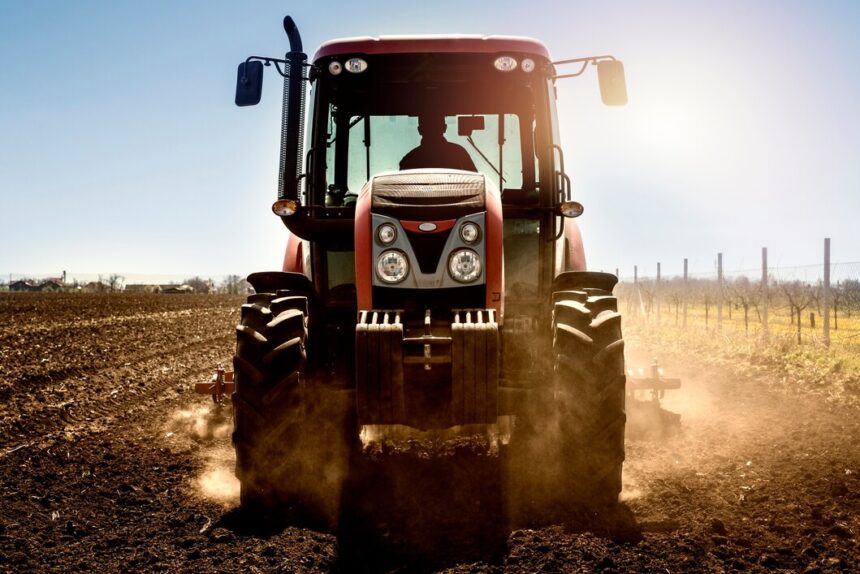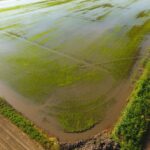Soil is the foundation of farming, and understanding the various types of soil in South Africa is essential for effective land management and equipment use. Different soil types have unique characteristics that affect crop growth, water retention, and drainage, all of which influence the performance of farming equipment. In this article, we will explore the different soil types found in South Africa and how these soils impact farming practices, especially the use of agricultural equipment.
1. Types of Soil in South Africa
South Africa’s diverse landscape, which includes coastal areas, mountains, and expansive inland regions, is home to a wide range of soil types. These soils vary in texture, fertility, and suitability for different crops. The main types of soil found in South Africa include:
- Sand (Sandy Soil) Sandy soil has large particles that are loosely packed together, allowing for good drainage. However, it tends to lose moisture and nutrients quickly, which can limit its fertility. It is often found in areas with little rainfall and can be challenging for farming without the use of irrigation systems and organic amendments.
- Clay (Clayey Soil) Clay soil consists of very fine particles that are tightly packed together, which can cause water to drain slowly. While clay retains nutrients and moisture well, it can become compacted, limiting root growth and air circulation. This soil type is often found in areas with more rainfall and can be more fertile when properly managed.
- Loam (Loamy Soil) Loam is considered the ideal soil for farming, as it is a balanced mixture of sand, silt, and clay. It has good drainage while retaining moisture and nutrients, making it suitable for a wide range of crops. Loam soil is found in many agricultural regions of South Africa, including the Western Cape and parts of the Free State.
- Silt (Silty Soil) Silty soil has smaller particles than sand but larger than clay. It retains moisture well and is fertile but is prone to compaction, which can affect water drainage. Silty soils are often found along riverbeds and floodplains, making them fertile but also susceptible to erosion.
- Peat Soil Peat soils are high in organic matter and are typically found in wetlands or areas with high water tables. These soils are acidic and retain moisture, but they may need special management for drainage and aeration to prevent crop damage. Peat soil is less common in South Africa but can be found in some areas, particularly in the Eastern Cape.
- Chalky Soil Chalky soils are alkaline, with high calcium content. These soils can be fertile but may require the addition of nutrients such as iron and magnesium for optimal crop growth. Chalky soils are not as prevalent in South Africa but can be found in some regions with limestone deposits.
2. Effects of Soil Types on Equipment Use
The characteristics of different soil types can significantly influence how farming equipment is used, including tilling, planting, and harvesting. Below are some of the key ways in which soil types impact equipment performance:
a. Tilling and Plowing
- Sandy Soil: Sandy soils are loose and easy to till, which generally requires less effort from tillage equipment. However, they can lack structure, leading to difficulties in creating a fine seedbed. Equipment like disc plows and harrows should be adjusted for a lighter touch to avoid overworking the soil.
- Clay Soil: Clay soil tends to be harder to work with, particularly when it is wet or compacted. It requires heavier equipment, such as subsoilers or deep rippers, to break up the soil and prevent compaction. Tillage must be done carefully to avoid damaging the soil structure or creating hardpan layers that prevent root growth.
- Loamy Soil: Loam soil is ideal for tillage, as it is neither too compacted nor too loose. Standard tillage equipment, such as rotavators or disc harrows, works efficiently on loam soil. However, over-tillage can lead to soil erosion, so careful management is required.
- Silty Soil: Silty soil is prone to compaction, especially when wet. Farmers should be cautious with tilling equipment to prevent further compaction, which can result in poor drainage and root development. Using lighter tillage equipment and reducing tilling frequency can help protect soil structure.
b. Planting and Seedling Establishment
- Sandy Soil: Planting in sandy soil requires equipment that can ensure good seed-to-soil contact despite the soil’s loose nature. Precision seeders or drills that place seeds at uniform depths and in close contact with moist soil are crucial in these conditions. Farmers may also need to use irrigation equipment to compensate for the soil’s rapid moisture drainage.
- Clay Soil: In clayey soil, planting can be challenging due to its tendency to become compacted. Equipment that helps loosen the soil around the seed, such as deep-seeding drills or no-till planters, can improve seedling establishment. However, careful attention should be paid to soil moisture content—planting should not be done when the soil is too wet, as this can lead to clumping and difficulty in seed placement.
- Loamy Soil: Loam soil provides ideal conditions for planting, and most types of planting equipment, such as seed drills or planters, work efficiently. The soil retains moisture while providing good structure for root development, making it easier for seeds to establish.
- Silty Soil: Silty soils require careful management during planting. Heavy equipment can lead to soil compaction, which hinders seedling growth. Lighter, precision planting equipment that minimizes soil disturbance can be used effectively to maintain proper planting depth.
c. Harvesting
- Sandy Soil: Sandy soils are typically easier to harvest, as they do not become waterlogged, reducing the likelihood of harvesting delays. However, care must be taken to ensure that the harvested crop is not damaged by excessive dust or loose soil, which could affect crop quality.
- Clay Soil: Clayey soils can be problematic for harvesting equipment, especially if they become wet and sticky. Harvesting equipment may struggle to operate efficiently in heavy or waterlogged clay soils, and farmers may need to wait for the soil to dry out before attempting to harvest.
- Loamy Soil: Loam soils tend to provide smooth conditions for harvesting, and machinery such as combines work well on these soils. However, soil compaction from repeated harvesting can affect yield over time, so it is important to manage equipment weight and tire pressure to prevent damage.
- Silty Soil: Silty soil requires careful attention during harvesting to prevent equipment from becoming stuck in wet or overly compacted areas. Harvesters must be adjusted to minimize soil disruption and prevent damage to the crop.
3. Choosing the Right Equipment for Different Soils
To ensure that farming equipment is used effectively and efficiently in different soil types, it is essential to consider the soil characteristics and adjust equipment accordingly. Here are some key considerations:
- Adjust Tillage Depth and Speed: In harder soils like clay, equipment may need to operate at slower speeds and greater depths to break up compacted layers. In lighter soils like sand, shallower tilling and faster speeds may be appropriate.
- Monitor Soil Moisture: The moisture content of the soil can drastically affect how equipment performs. Wet soils, especially clay and silty soils, may require lighter equipment or adjusted operating speeds to prevent damage and compaction.
- Use Specialized Equipment for Certain Soil Conditions: For compacted soils, subsoilers and deep rippers are effective at loosening the soil. For sandy soils, lighter machinery that can prevent excessive soil disturbance should be used.
Understanding the different types of soil in South Africa and their unique characteristics is crucial for optimizing farming practices and equipment use. By selecting the right equipment for each soil type and adjusting operations accordingly, farmers can improve efficiency, minimize soil damage, and maximize crop yields. Whether dealing with sandy, clayey, loamy, or silty soils, proper equipment management tailored to soil conditions can make a significant difference in the success of farming operations.







